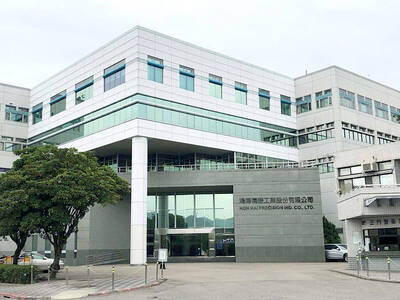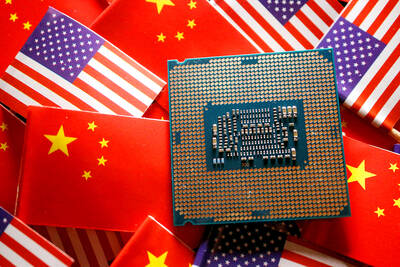The run-down neighborhood rice shop on a quiet side street in central Tokyo has seen a lot of change in 60 years: more traffic, more people, higher buildings.
One thing hasn't changed for 59-year-old Tomoyuki Takahashi, though. His customers still don't like foreign rice.
"Foreign rice is for foreigners," said the cigarette-puffing Takahashi, who has been working at the Azabu shop for 44 years. "Japanese people like only Japa-nese rice."
In a nation where rice once served as a currency, cultural and social sentiment have long been used by Japan to protect its politically connected rice farmers from foreign invaders.
Tariffs as high as 490 percent have discouraged exporters such as the US and Australia from boosting sales to the country beyond the current tariff-free 770,000 tonnes a year.
This has enabled a rice industry that foreign trade officials call inefficient and outmoded to lumber on unchecked, charging consumers six times the average world price.
It's not all about culture and tradition, however.
Domestic political considerations also loom large as Japan comes under growing pressure to lower agricultural barriers.
The issue of farm trade reform is a major sticking point in stalled global talks to free up trade between the WTO 146 members due to meet in Mexico next week.
For Japan, farm trade boils down to rice.
"Culturally speaking, agriculture is rice," said a Western diplomatic source. "Japanese rice is seen as an icon of cultural protectionism around the world."
Japan doles out seven times the cost of production in government support, with ?3 billion to ?4 billion (US$26 million US$34 million) in direct subsidies, according to the Rice Data Bank in Japan.
Japan has said repeatedly it will not accept a WTO proposal to limit tariffs on agricultural products. This could hobble a draft blueprint for trade talks even before negotiations start.
In a move to limit imports, Japan said this week it would release 190,000 tonnes of rice from stocks held by the government and private distribution channels to alleviate worries about a supply shortage and halt a sharp rise in prices.
A Sept. 20 vote in which Prime Minister Junichiro Koizumi bids for re-election as head of the ruling Liberal Democratic Party will only end up strength-ening Japan's resolve to stand firm in the face of pressure, analysts said.
The base is shrinking, however. Some 2.9 million people worked on farms in 2000, down from 3.9 million a decade earlier and 12 million in 1960.
Tradition also plays a part.
Centuries of eating Japanese rice, favored by locals for its gelatinous texture and short, round grains, still make the prospect of tucking into foreign rice a hard sell, say foreign export officials, who blame Japan's tough import restrictions.
"Education is continuing, but it's still in the development phase," said a representative of a foreign rice growers' association, who asked not to be named. "Unfortunately, it's quite limited access to the market."

Shares in Taiwan closed at a new high yesterday, the first trading day of the new year, as contract chipmaker Taiwan Semiconductor Manufacturing Co (TSMC, 台積電) continued to break records amid an artificial intelligence (AI) boom, dealers said. The TAIEX closed up 386.21 points, or 1.33 percent, at 29,349.81, with turnover totaling NT$648.844 billion (US$20.65 billion). “Judging from a stronger Taiwan dollar against the US dollar, I think foreign institutional investors returned from the holidays and brought funds into the local market,” Concord Securities Co (康和證券) analyst Kerry Huang (黃志祺) said. “Foreign investors just rebuilt their positions with TSMC as their top target,

REVENUE PERFORMANCE: Cloud and network products, and electronic components saw strong increases, while smart consumer electronics and computing products fell Hon Hai Precision Industry Co (鴻海精密) yesterday posted 26.51 percent quarterly growth in revenue for last quarter to NT$2.6 trillion (US$82.44 billion), the strongest on record for the period and above expectations, but the company forecast a slight revenue dip this quarter due to seasonal factors. On an annual basis, revenue last quarter grew 22.07 percent, the company said. Analysts on average estimated about NT$2.4 trillion increase. Hon Hai, which assembles servers for Nvidia Corp and iPhones for Apple Inc, is expanding its capacity in the US, adding artificial intelligence (AI) server production in Wisconsin and Texas, where it operates established campuses. This

US President Donald Trump on Friday blocked US photonics firm HieFo Corp’s US$3 million acquisition of assets in New Jersey-based aerospace and defense specialist Emcore Corp, citing national security and China-related concerns. In an order released by the White House, Trump said HieFo was “controlled by a citizen of the People’s Republic of China” and that its 2024 acquisition of Emcore’s businesses led the US president to believe that it might “take action that threatens to impair the national security of the United States.” The order did not name the person or detail Trump’s concerns. “The Transaction is hereby prohibited,”

Garment maker Makalot Industrial Co (聚陽) yesterday reported lower-than-expected fourth-quarter revenue of NT$7.93 billion (US$251.44 million), down 9.48 percent from NT$8.76 billion a year earlier. On a quarterly basis, revenue fell 10.83 percent from NT$8.89 billion, company data showed. The figure was also lower than market expectations of NT$8.05 billion, according to data compiled by Yuanta Securities Investment and Consulting Co (元大投顧), which had projected NT$8.22 billion. Makalot’s revenue this quarter would likely increase by a mid-teens percentage as the industry is entering its high season, Yuanta said. Overall, Makalot’s revenue last year totaled NT$34.43 billion, down 3.08 percent from its record NT$35.52